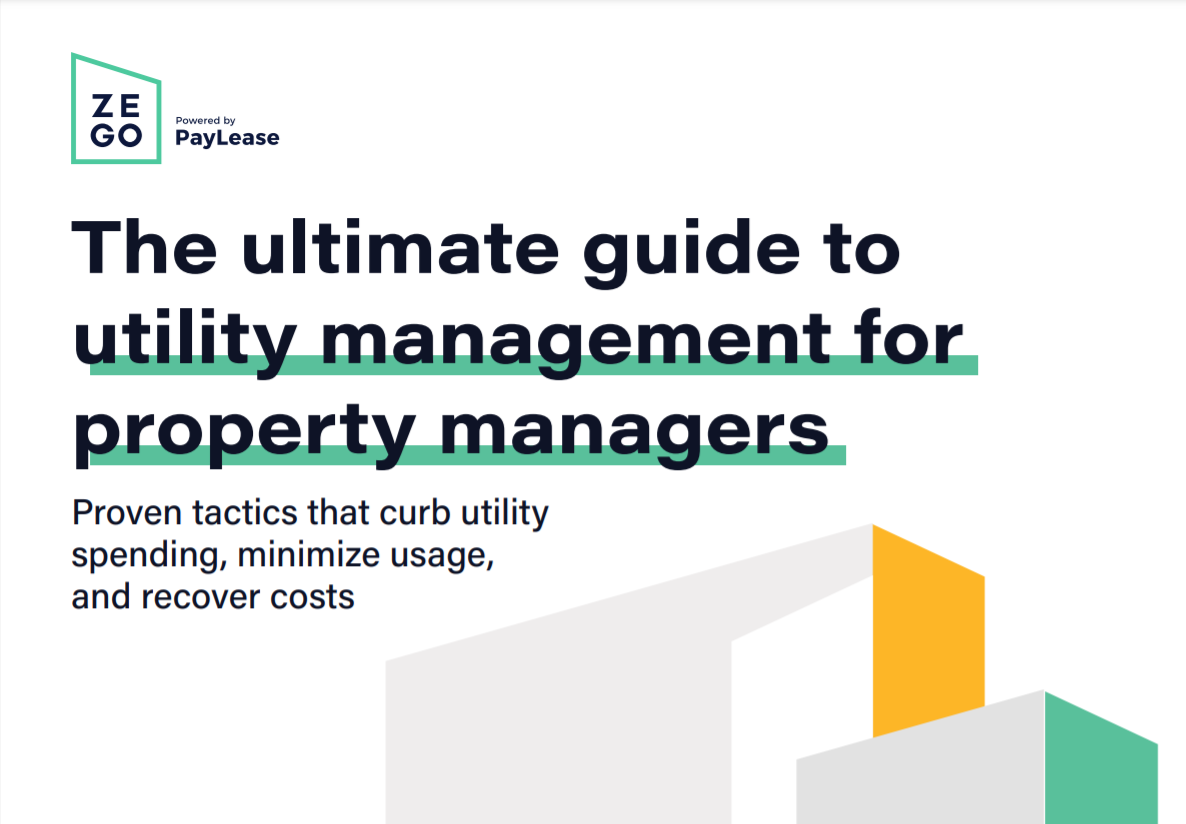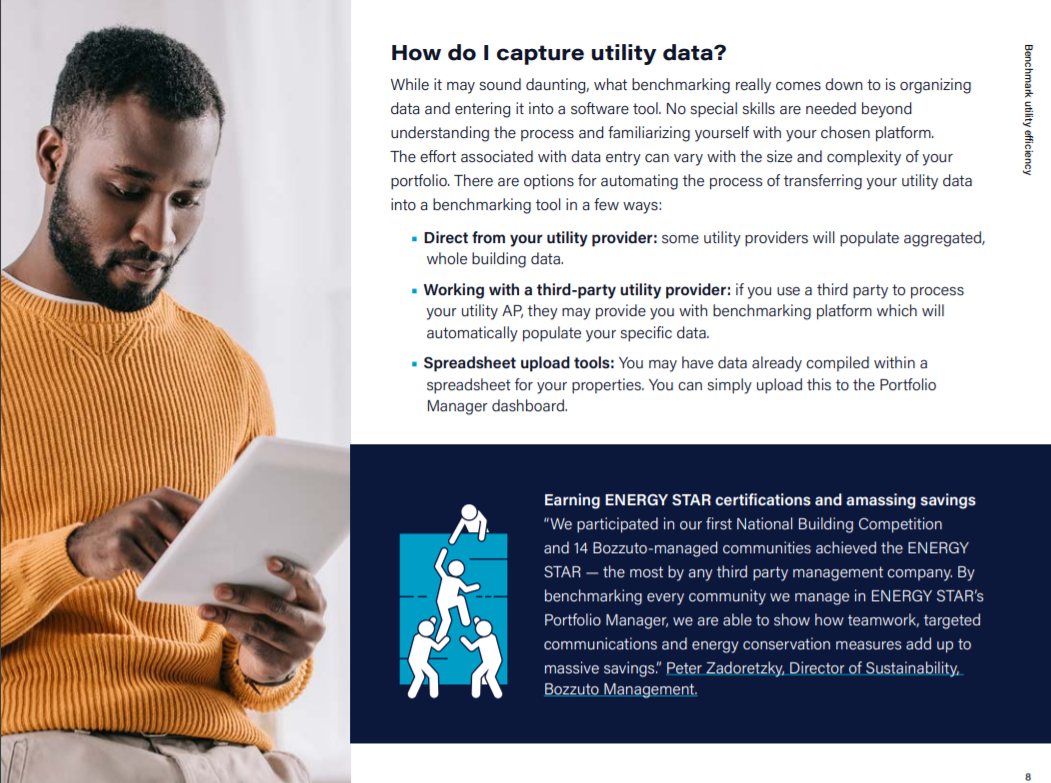Why resident utility billing for multifamily communities is needed now more than ever
Learn five reasons why resident utility billing for multifamily is more important now than ever when it comes to NOI at apartment communities.
Recouping resident utility expenses has always been a key component to a healthy NOI. That’s because utilities are one of the top expenses for apartment communities. But thanks to resident utility billing, property management companies can recover almost all of that back from their renters. And after a tumultuous year for the industry, it’s never been a more valuable strategy.
What is resident utility billing for multifamily communities?
Resident utility billing is the most effective way to recoup multifamily utility expenses. Using this method, renters are billed based on the utilities they use. This allows your company to recoup the maximum amount of utility expenses that are owed to you.
Unlike charging a flat fee or including utilities in the rent, this method incentivizes residents to practice conservation. When residents are financially accountable for their utility consumption, they use less than if utilities are included in their rent. Ultimately, resident utility billing leads to lower operating costs for your community and fewer needless expenditures on your part.
FREE DOWNLOAD Proven tactics to lower utility usage, recover costs and curb spending at multifamily properties.


Ultimate Guide to Utility Management
Why billing residents for utilities is so important in 2022
2021 was a difficult year for many, and a few things happened that made an even stronger case for resident utility billing. Multifamily communities are now more prone to losing money from utility expenses than they used to be. Particularly if you include any utilities in the rent, or charge residents a flat fee for their utilities.
So, here’s why charging residents based on consumption makes the most sense for multifamily companies today.
1. Renters are home more than they used to be
The first reason utilities are costing you more is that energy and water consumption are higher than ever. That’s largely in part to more people working at home.
For many of us, the pandemic flipped our home and office balance. Before 2020, most of your renters probably left their apartment for 8-10 hours to go to work. Now that’s changed.
While businesses are gradually welcoming workers back into the office, many employees are not returning – at least not on the same cadence as pre-pandemic.
A survey done by Owl Labs shows that many people will continue to work from home, even if COVID-19 ever ends. Ninety-two percent of survey respondents said they expect to work from home at least one day per week, and 80% said they’d have three work-from-home days per week.
And now, with the Omicron variant raging, workers might be at home full time even longer. Just in the past two weeks, some of the largest companies have pushed their in-office return to several months out. Some have said they will have employees work from home indefinitely.
Those who were either already going back to the office or had plans to return are likely to ride out this next wave of COVID from their home.
2. More time at home means higher utility consumption
A natural consequence of being home more is that utility consumption increases.
The National Bureau of Economic Research studied exactly how much it’s increased with more people working from home. Based on data from smart meters, they found that industrial and commercial energy use dropped by about 15%, while residential energy consumption rose by 10%.
A 10% increase in utility expenses has significant impacts on your NOI if you are not billing residents for utilities and recovering those added costs from your renters.
3. Extreme temperatures are driving excessive energy consumption
It seemed like 2021 saw an unusual amount of extreme weather patterns.
Texas literally froze over. The Pacific Northwest shattered high-temperature records.
The World Meteorological Association says these events are the “new norm”. These extreme patterns have increased fivefold over the past 50 years and are not expected to stop.
When extreme weather hits, we respond by adjusting our thermostat. One study found that just one extra day with temperatures above 90 F increases annual household energy use by 0.4%.
More recent research shows that energy use increases the most in places that tend to be hotter. That is because more homes in these regions have air conditioning. As we gear up for a frigid winter and likely a hotter-than-normal summer, it might be the time to re-evaluate how you will recoup the added demand for energy.
4. Energy and gas prices are soaring
Along with consumption increasing, utility prices are also going up. Natural gas costs have jumped 112% since January 2021 according to CNBC. And they are projected to keep rising.
The U.S. Energy Information Administration (EIA) released a report predicting that half of U.S. households that primarily heat their homes with natural gas will pay about 30 percent more this year. This amount could fluctuate between a 22 percent or 50 percent increase, depending on what winter conditions are like.
If you are charging residents a flat fee for utilities or include it in the price of rent, you will not be able to cover these extreme price increases.
5. Other market conditions hurt NOI in 2021
Lastly, recouping utility expenses has become more important because market conditions have already taken a toll on NOI.
NAA’s 2021 Income and Expenses Survey cites a 3.3% loss in year-over-year NOI. That’s the first decline our industry has seen in over a decade!
The combination of eviction moratoriums, falling revenues, and skyrocketing expenses has the industry in uncharted waters. That means an effective utility strategy matters more than ever. Without it, multifamily companies are more vulnerable to continual damage to their bottom line
The dos and don’ts of resident utility billing for multifamily
Higher energy consumption along with higher prices make this an opportune time to re-examine your utility management strategies. Luckily, there are ways that allow you to recoup these costs from residents.
Don’t entertain flat fee or utilities-included models
Given the unique challenges that 2021 brought, there are two methods you should NOT use to recover utility expenses. We touched on them earlier, but flat fees and including utilities in the rent are detrimental to your NOI.
In theory, these two methods sound like a good strategy. After all, you’re still bringing in money to offset your utility costs, right? Well, it doesn’t really work out that way.
One reason these aren’t good tactics is that they leave your cash flow volatile. As you know, utility rates fluctuate. And since rates are rising at unprecedented rates, at some point you will lose money.
Unfortunately, if your organization is under-charging residents, you’ll be stuck in a cycle of leaving money on the table. Depending on your property’s location, you may be prohibited from revising your flat fee due to regulatory restrictions. But, you can pull yourself out of this cycle by charging based on consumption.
Do bill residents based on utility consumption
If you want to bill residents for their utility consumption there are two ways to do so.
Submeters provide precise utility readings
Submeters are the easiest and most precise way to bill based on consumption. They are individual meters for each unit and are installed behind the master meter. Those meters are monitored by an in-house team or your submeter vendor rather than the utility provider. The readings precisely show the utility consumption for each unit.
From there, you can bill residents for what they owe. However, many companies find it worthwhile to have a third-party create and distribute these invoices to residents.
RUBS allocates charges based on certain factors
RUBS stands for Ratio Utility Billing System. And if you don’t have submeters, this is how you’ll calculate what each resident owes.
RUBS uses set parameters to determine what each unit owes for utilities. Those can include the number of occupants per unit, square footage, or other factors. Either the property management company or a resident utility billing provider performs the RUBS calculations. From there, they produce invoices and distribute them to residents.
More multifamily resident utility billing management strategies to help NOI
How you bill for utilities is just one piece of the puzzle when it comes to utility management. If you are looking for more ways to streamline costs or make the process more efficient, we’re here to help. Schedule a consultation with our team and we can identify areas for improvement.
Or, in the meantime, read up on more utility tactics in our free guide. Download your copy of The Ultimate Guide to Utility Management for Property Managers.